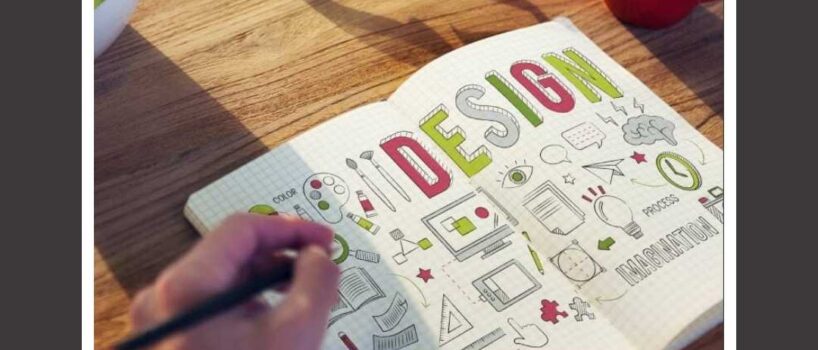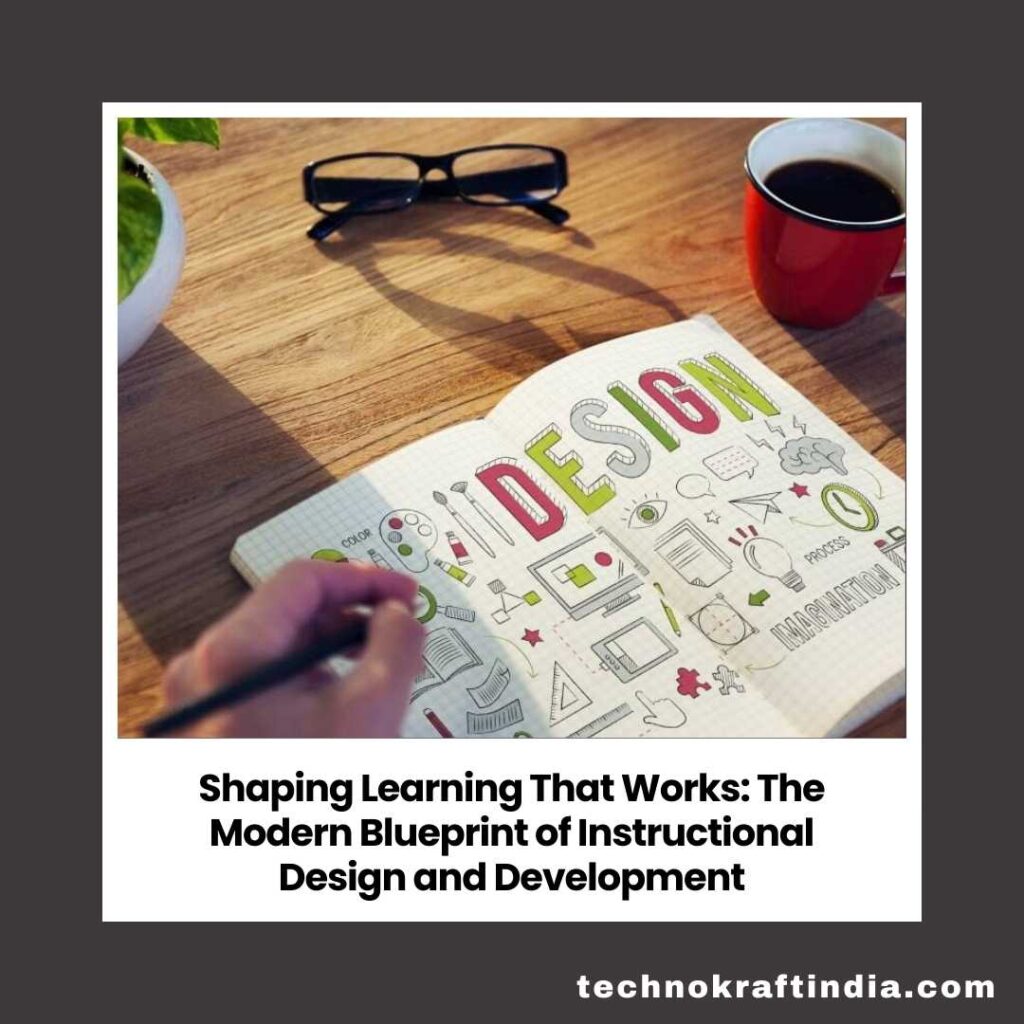
Shaping Learning That Works: The Modern Blueprint of Instructional Design and Development
Shaping Learning That Works: The Modern Blueprint of Instructional Design and Development
Learning in the modern world demands clarity, structure, and purpose. Organizations, educators, and training teams seek methods that turn information into practical skills. This is where Modern Instructional Design Blueprint steps in with a strong and strategic approach. It transforms complex knowledge into structured learning experiences that engage learners and support real outcomes. With technology evolving at a rapid pace, the field has become even more important for creating training programs that are meaningful and future-ready.

This blog explores the essential elements, workflow, tools, benefits, and future trends of instructional design and development. Each section highlights how strong design improves learning impact and builds effective training ecosystems.
1. Understanding the Core of Instructional Design and Development
Modern Instructional Design Blueprint involves planning, creating, and delivering learning experiences that help people gain knowledge and skills. It is not just about writing content. Instead, it blends psychology, creativity, structure, and technology to support learning success. Professionals in this field use established models to shape clear educational paths that guide learners from understanding to mastery.
The practice often begins with understanding who the learners are and why they need training. It also covers what challenges they face and how a program can support their progress. Because of this holistic view, instructional design and development helps build high-quality training systems for schools, companies, and online platforms.
Moreover, this field relies on data and feedback. Designers analyze performance gaps, skill needs, and learning patterns. This information supports decisions that improve content accuracy, accessibility, and engagement. With the right strategy, training becomes more than a requirement. It becomes an experience that adds value to each learner’s journey.
2. Essential Stages in the Instructional Design and Development Process
Every strong training program follows a structured process. This ensures consistency, clarity, and measurable impact. Even though several models exist, most instructional design and development workflows follow five essential stages.
A. Analysis
The process starts with identifying learning goals, audience characteristics, and performance gaps. Designers study learner backgrounds, skill levels, and workplace challenges. This stage helps define what must be taught and why it matters. Without clear analysis, training risks becoming unfocused and ineffective.
B. Design
The design stage includes outlining the content structure, selecting instructional methods, defining assessments, and choosing media elements. Designers often create storyboards, scripts, and prototypes during this step. A well-designed blueprint ensures that content flows smoothly and supports learner engagement.
C. Development
Development is the stage where ideas turn into real learning materials. Content creators produce modules, videos, quizzes, worksheets, and interactive activities. Tools like authoring software, multimedia applications, and LMS platforms help teams build professional training assets.
D. Implementation
Once materials are ready, the instructional design and development team delivers the program to learners. This may take place through a classroom environment, online platform, blended approach, or mobile learning. Proper implementation ensures that learners can access and use the training with ease.
E. Evaluation
Evaluation measures how well the training supports learning goals. It includes tests, surveys, performance reports, and feedback reviews. Because evaluation highlights what works and what needs improvement, it strengthens the long-term success of instructional programs.
This structured approach keeps the entire learning ecosystem aligned and ensures training delivers results.
3. Tools and Technologies That Shape Modern Instructional Design
Innovation plays a strong role in today’s instructional design and development landscape. As learning needs evolve, designers rely on advanced tools to create interactive and personalized experiences.
Learning Management Systems (LMS)
Platforms such as Moodle, Canvas, and TalentLMS help manage, track, and deliver training content. They provide dashboards, reports, and analytics that support insights into learner progress.
Authoring Tools
Tools like Articulate Storyline, Adobe Captivate, and iSpring Suite help designers create engaging eLearning modules. These tools support animations, quizzes, branching scenarios, and interactive activities that improve learner participation.
Multimedia and Creative Tools
Graphic design software, video editing tools, and audio applications allow creators to produce visual, auditory, and interactive elements. Rich media improves understanding and keeps learners actively involved.
AI-Driven Personalization Systems
Artificial intelligence now supports adaptive learning experiences. Systems recommend personalized content, track study patterns, and suggest improvement areas. This helps training become more relevant and effective.
Collaboration and Review Platforms
Cloud-based tools enable teams to review content, share feedback, and update learning materials quickly. Smooth collaboration ensures accuracy and efficiency during the development cycle.
Technology improves instructional design and development by making training more dynamic, accessible, and scalable for various learner groups.
4. How Instructional Design and Development Improves Learning Outcomes
Strong instructional design and development practices create learning programs that deliver measurable benefits. These advantages impact learners, organizations, and educators alike.
Better Learning Retention
Planned structure, spaced repetition, and real-world examples support long-term understanding. Learners retain concepts better when content follows a clear and engaging path.
Higher Engagement and Motivation
Interactive elements, multimedia resources, and active learning strategies keep learners interested. When content feels relevant, learners stay motivated and complete programs with confidence.
Smooth Skill Transfer
Meaningful practice, simulations, and scenario-based learning help learners apply knowledge in real situations. This leads to stronger job performance and improved problem-solving skills.
Consistent Training Quality
Instructional design and development ensures that all learners receive well-structured, high-value training regardless of instructor or location. Standards remain consistent across all sessions.
Reduced Training Costs
Effective digital learning reduces the need for repeated instructor-led sessions. It saves time, travel, and resources for companies and institutions.
Data-Driven Decision Making
Analytics from LMS systems and assessments help organizations identify skill gaps and training needs. Data supports improvements and aligns learning with business goals.
With these benefits, organizations see faster growth and learners experience more meaningful progress.
5. Future Trends Shaping Instructional Design and Development
The future of instructional design and development is influenced by digital transformation, advanced technologies, and evolving learner expectations. Several key trends will shape how learning programs develop in the coming years.
Microlearning and Bite-Sized Training
Learners prefer short, focused modules that fit into busy schedules. Microlearning supports quick understanding and practical application.
Adaptive and Personalized Learning
AI-powered platforms will adjust content based on user performance. This personalized path improves motivation and mastery.
Immersive Learning with AR and VR
Augmented and virtual reality make complex tasks easier to learn. Immersive simulations help learners practice safely and gain real-world experience before working in live environments.
Mobile-First Learning Experiences
Smartphones continue to dominate digital use. Mobile-ready training ensures that learners can study anytime and anywhere.
Social and Collaborative Learning
Discussion forums, learning communities, and peer-to-peer platforms enhance engagement. Social learning encourages communication, teamwork, and shared problem-solving.
Data-Enhanced Design Decisions
Instructional designers will rely even more on analytics to refine content, predict learning needs, and boost training effectiveness.
These trends highlight the exciting future of learning and the powerful role instructional design and development will continue to play.
Conclusion
Modern Instructional Design Blueprint brings clarity, structure, and purpose to the learning world. With a strong process, the right tools, and learner-centered strategies, organizations can build training experiences that truly make an impact. As technology advances, the field will continue to evolve, offering new ways to engage learners and strengthen skills. By embracing these principles, educators and companies can ensure their training programs remain effective, relevant, and ready for the future.
